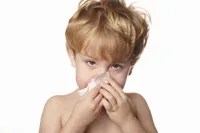For most of us, it’s OK if we happen to dive into a dessert that just happens to be laced with peanuts. But, for those unfortunate few with food allergies, these surprises can bring more than bad taste — they can cause a full-blown emergency. Here are the facts on food allergies:
Fiction: If your child is allergic to a certain food, you will know right away.
Fact: Our bodies do not produce an allergic response to a substance until we have encountered that same substance before. So, your child could have eaten a peanut butter and jelly sandwich every day for the last three years and then, all of a sudden break out in a full blown rash from one little peanut found in his trail mix. This is why food allergies, and allergies in general, are so hard to diagnose. The most common symptoms of a food allergy include:
—Rash
—Wheezing
—Cough
—Hoarseness and tightness in throat
—Nausea
—Stomach cramps
—Vomiting
—Diarrhea
If your child ever experiences any of these symptoms or any warmth, flushing and/or throat tingling, you need to call the pediatrician right away. Although it is rare, anaphylactic-type reactions leading to dangerous drops in blood pressure can occur and require immediate medical attention.

Fiction: Children will eventually outgrow their food allergies.
Fact: Although many kids will outgrow their allergies to foods, some may not. Those who are allergic to tree nuts (almonds, walnuts, cashews, etc.) have only a 9 percent chance of outgrowing their allergy, while those allergic to peanuts have a higher chance at 20 percent. The good news is that approximately 85 percent of children allergic to cow’s milk, soy, wheat, and egg will outgrow their allergy by the time they’re 5.
Fiction: Food allergies only occur in children whose parents have food allergies.
Fact: Just because you and your spouse do not suffer from food allergies does not mean your child will be spared. Although there is a strong hereditary link associated with the development of allergies, there is still a 10 to 15 percent chance a child can develop a food allergy despite a negative family history.
Fiction: There are tests that predict what exactly your child is allergic to.
Fact: While there are a variety of tests available, none is 100 percent accurate. The blood allergen test known as RAST often results in false positive reactions. This means that the test may say your child is allergic to a certain food or substance when, in fact, they are not. Evaluating a child for food allergies can be a complicated process and usually involves a combination of blood tests, skin tests, and keeping a food diary.
TARA KOMPARE is a doctor of pharmacy and mother of two. You can visit her website at www.themedicinemom.com or email her directly at [email protected].
Allergies, out and in
Many allergy sufferers stay indoors when their symptoms are raging, but a new Zagat guide, Out and About with Allergies: An Insider’s Guide to Enjoying the City, offers up off-the-beaten-path outdoor attractions and restaurants in 20 cities, including New York. The guide also provides tips to better manage allergy symptoms, and information on a new prescription treatment, Veramyst nasal spray. Download the guide at www.outandaboutwithallergies.com.
To keep the home allergen-free, Dr. Clifford Bassett, a board-certified allergist and medical director of Allergy and Asthma Care of New York, suggests a whole-home air purifier. “Allergy symptoms like coughing, wheezing, sneezing and itchy eyes can be exacerbated by invisible pollutants like indoor air allergens that lurk in all corners of the home,” he says. Aprilaire Whole-Home Air Cleaner 5000 captures 98 percent of indoor allergens, including dust and dust mites, pet dander, mold spores, allergens, pollen, bacteria, viruses and smoke. For more information, go to www.aprilaire.com.





















